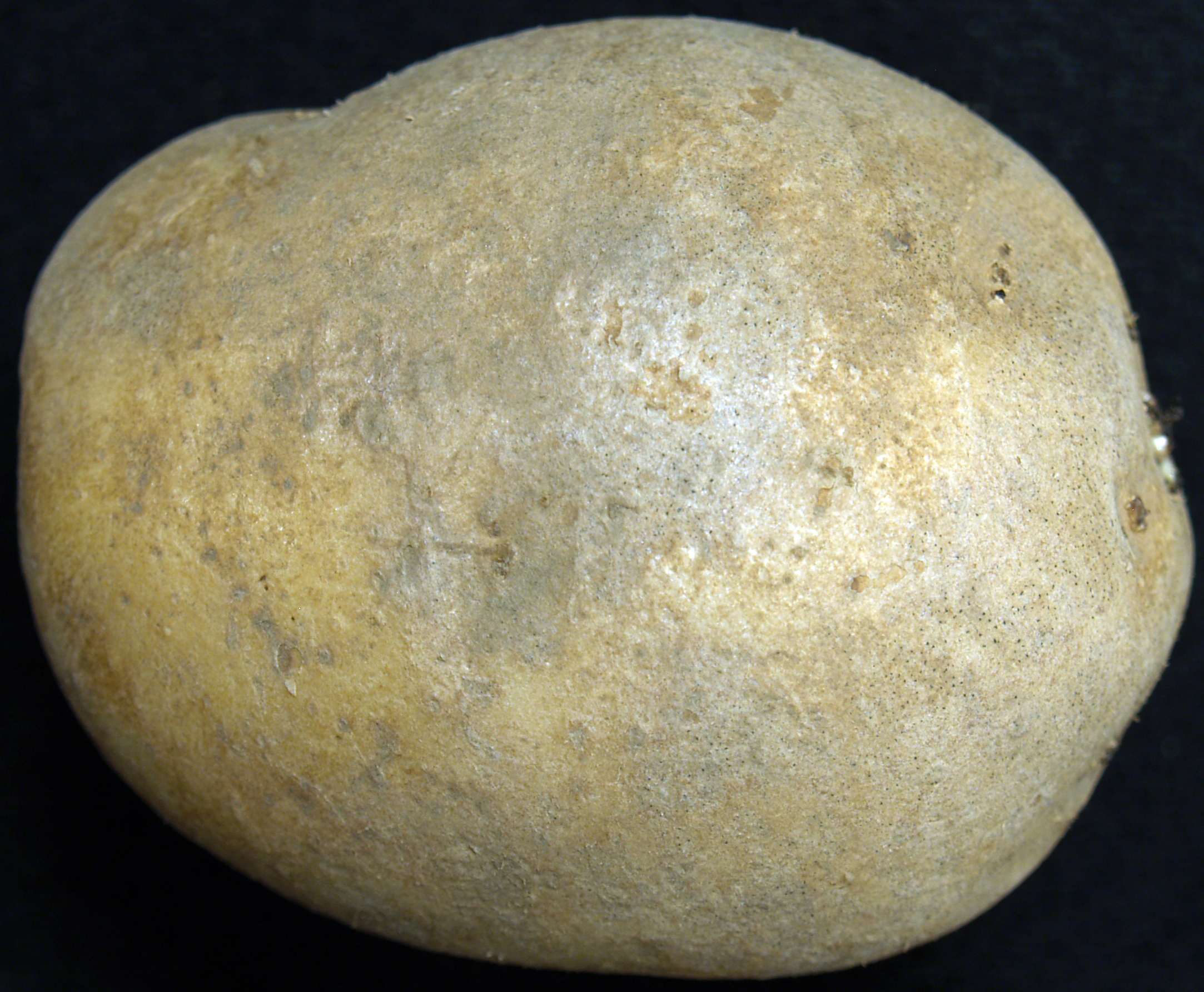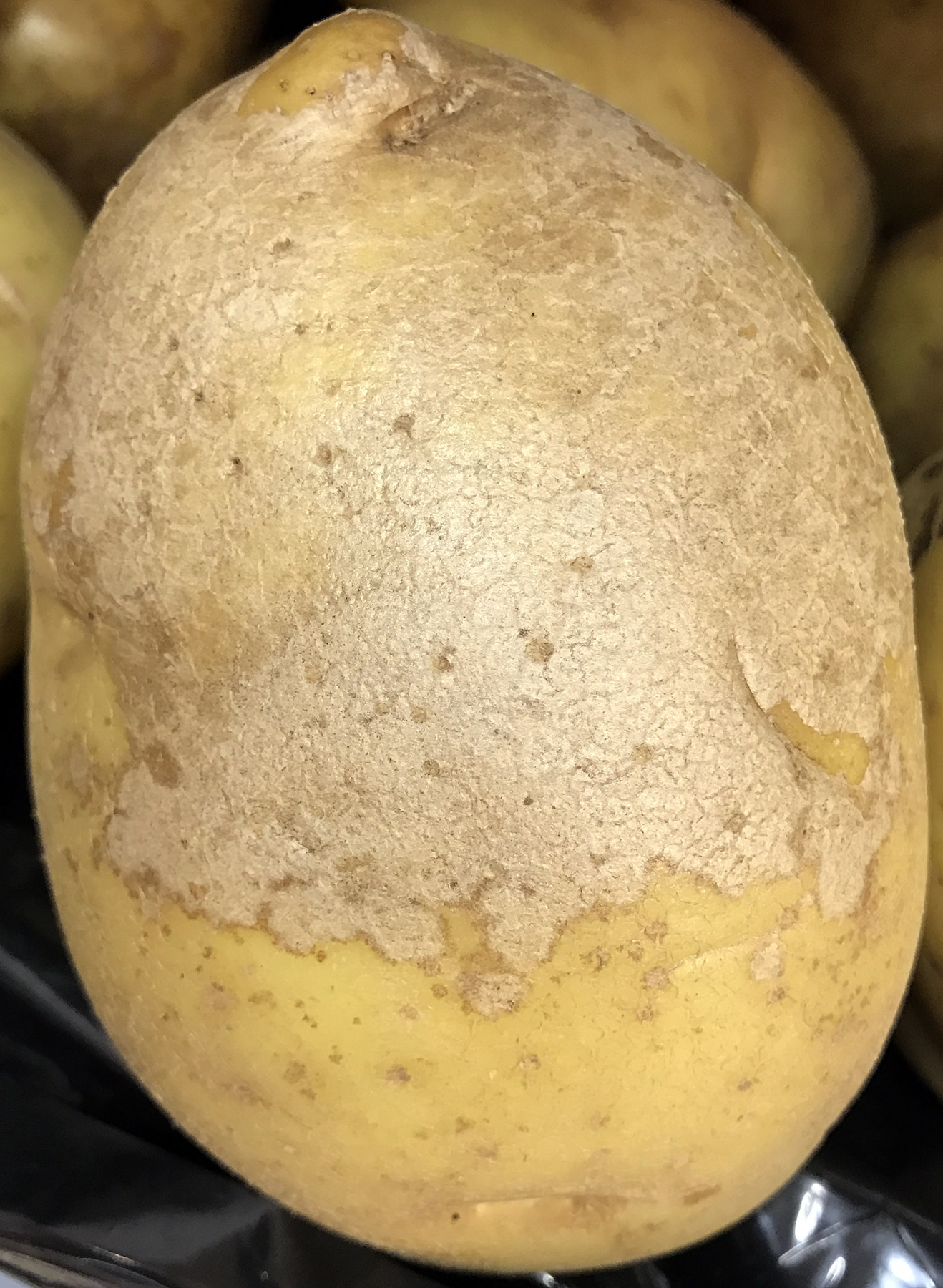Potato diseases such as black dot (Colletotrichum coccodes) and silver scurf (Helminthosporium solani) cause skin blemishes, which can lead to a decrease in the market value of the crop. Infection by C. coccodes and H. solani not only affect the quality and yield of potatoes, but also serve as an important source of inoculum for future crops through the sowing of contaminated seed tubers.
Diseases such as black dot and silver scurf often are not visible at harvest or early storage; they typically show up one to three months after tubers were placed in storage. It is very important to determine which blemish disease you have, as management options for control of these diseases are very different.
Black dot is a common disease of potato most often observed on tubers, but it can affect all parts of the plant. It is named after the microsclerotia that form on tubers and are often just visible to the naked eye. Tuber symptoms appear as brownish to gray blemishes over a large portion of the tuber, or as circular to irregularly shaped areas. Black dot may develop as a silvery sheen during storage, which can be confused with silver scurf. However, black dot tends to show much more irregularly shaped patches with less well-defined margins than silver scurf. Inspection with a hand lens (10×) will quickly differentiate the regularly spaced black dots from the bunched threads of silver scurf.

Black dot is characterized by small, dark-colored microsclerotia that form on tuber skin.
Silver scurf only occurs on tubers. Although some tubers become infected in the field, the greatest damage usually occurs after tubers have been in storage for a month or more. Lesions caused in storage are circular and have definite margins. However, as the disease progresses in storage, individual lesions can coalesce, eventually covering the entire surface of the tuber. The silvery appearance of lesions is most obvious when tubers are wet and results from air pockets in dead periderm (skin) cells. After a few months in storage, the epidermis under silver scurf lesions cracks, and tubers become shriveled and wrinkled due to excessive water loss. However, silver scurf lesions remain superficial, causing no damage to the underlying tissues.
To complicate matters further, both diseases can be present on the same tuber. With black dot, all infection of tubers occurs in the field before the tuber periderm has matured. Once the periderm has formed and the tubers have “set skin,” infection with black dot can no longer occur. However, with silver scurf, tubers are most susceptible to infection after the periderm has begun to mature. As such, when it comes to silver scurf, the time tubers spend in the field after skin set and time in storage are cumulative for disease development. Tubers that were infected with black dot in the field may then become infected with silver scurf in storage.
Both diseases are primarily controlled using cultural practices and fungicides. Studies have correlated higher incidences and severity of black dot in storage with high levels of black dot inoculum in the soil at planting. These results correlate well with research at the University of Idaho that showed a reduction in the levels of black dot in storage when tubers were protected in-furrow at planting with fungicides.
Infected seed is the main source of silver scurf inoculum, and seed treatments are effective in reducing silver scurf but will not prevent all infection of daughter tubers. However, unlike black dot, there are several post-harvest, pre-storage fungicides that can control silver scurf in storage. Research has shown that applications of phosphorous acid products (e.g., Resist 57, Phostrol) and the fungicide Stadium to be effective in controlling silver scurf in storage, especially when infection levels are low to moderate.
Unlike silver scurf, black dot does not spread in storage. However, disease severity will increase in infected tubers in storage if conditions are favorable. Black dot-infected tubers going into storage may look completely disease-free. However, under favorable conditions, fungal mycelia will grow out from microsclerotia and colonize the potato surface, causing raised lesions after two to three months in storage. This can lead to the impression that infection and disease occurred in storage. Managing temperature and humidity in storage can delay or prevent the onset of black dot blemish development.

As silver scurf disease progresses in storage, individual lesions can coalesce and cover large chunks of the tuber.
Considerable silver scurf infection can occur in storage, sometimes affecting all the tubers in a storage. How much disease develops depends on the number of infected tubers going into storage, environmental conditions in storage, and how long tubers are stored. As with black dot, cooler temperatures, lower humidity and adequate ventilation help reduce development of silver scurf in storage. Modifying the storage environment will not eliminate silver scurf development, but will reduce the production of spores and secondary infection of healthy tubers. If long-term storage is planned, the storage should not be opened to pack and ship a portion of the lot and then re-closed. Major losses have occurred in such situations, due to the dislodging of spores by the use of equipment and pressure differences when the storage is opened, with the air system then spreading the pathogen spores throughout the pile.
In summary, if you start to notice increasing levels of blemish diseases on your stored potatoes, it is important to determine whether you have silver scurf or black dot infection. Silver scurf can lead to further disease due to secondary infection in storage. Black dot will not lead to further infection of healthy tubers, but additional symptoms may appear on already infected tubers. In either case, it is probably best to pack and ship tubers for the fresh market as soon as possible. If long-term storage was planned, do not open the storage facility, and keep temperatures at the lower range of optimum based on the end use of the potatoes to inhibit disease development.